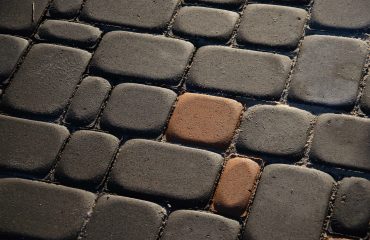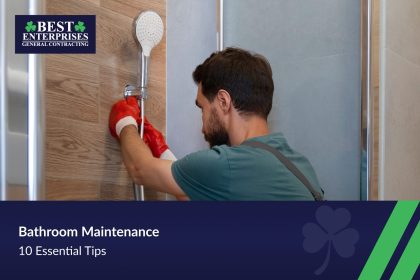
Your bathroom is one of the most-used spaces in your home—keeping it in top shape doesn’t have to be a chore! Whether you’re a home remodeling enthusiast or simply looking to maintain a fresh, clean space, regular bathroom maintenance is key. Not only does it save you money by preventing costly repairs, but it also extends the lifespan of your fixtures and keeps your bathroom hygienic.
In this guide, we’ll walk you through 10 essential bathroom maintenance tips, from cleaning hacks to preventing mold and water damage. Let’s dive in!
1. Regular Cleaning and Disinfection
Bathrooms are prone to the accumulation of bacteria, mold, and mildew due to their moist environment. Implementing a weekly cleaning routine is crucial. Focus on high-touch surfaces such as faucets, handles, countertops, and light switches. Use EPA-registered disinfectants to effectively eliminate pathogens. For a natural cleaning solution, mix equal parts water and white vinegar; this mixture can effectively clean various surfaces. Always ensure proper ventilation during and after cleaning to allow surfaces to dry completely, reducing the risk of mold growth.
2. Mold and Mildew Prevention
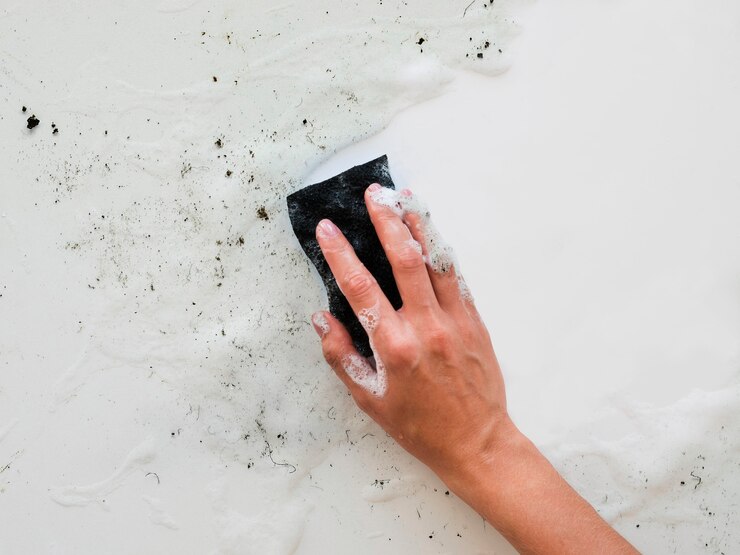
Mold thrives in damp environments, making bathrooms particularly susceptible. To mitigate mold growth, ensure your bathroom is well-ventilated. Utilize an exhaust fan during and after showers to expel moisture-laden air. If your bathroom lacks an exhaust fan, consider installing one or using a dehumidifier. Additionally, after bathing, wipe down shower walls and floors to remove excess moisture. Regularly inspect areas prone to dampness, such as under sinks and around the bathtub, and address any signs of mold promptly.
3. Grout and Caulking Inspection
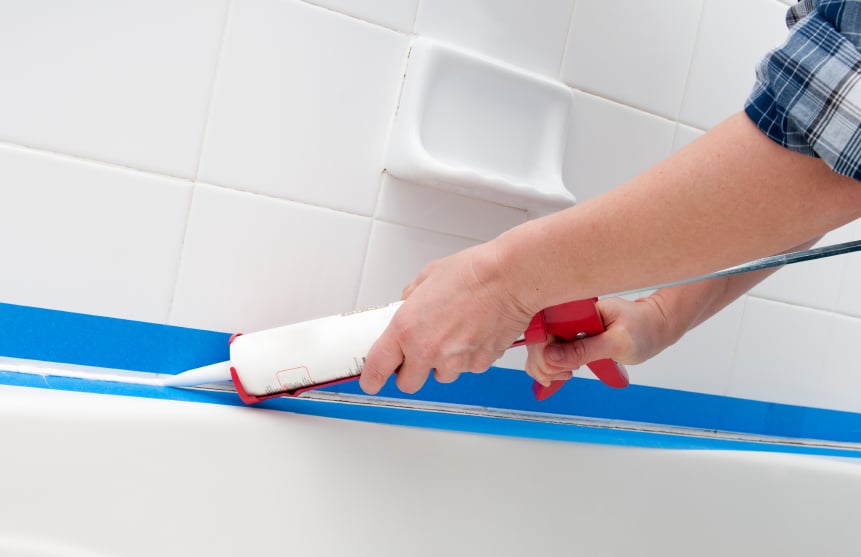
Grout and caulking play vital roles in sealing joints and preventing water seepage. Over time, they can deteriorate, leading to potential water damage. Regularly inspect these areas for cracks, discoloration, or mold. To repair:
- Remove the old caulk using a utility knife.
- Clean the area thoroughly to eliminate mildew and debris.
- Apply a mildew-resistant caulk evenly along the seam.
- Smooth the caulk with a damp finger or a caulking tool for a neat finish.
This process ensures a watertight seal, preventing water intrusion and potential structural damage.
4. Plumbing Fixture Maintenance
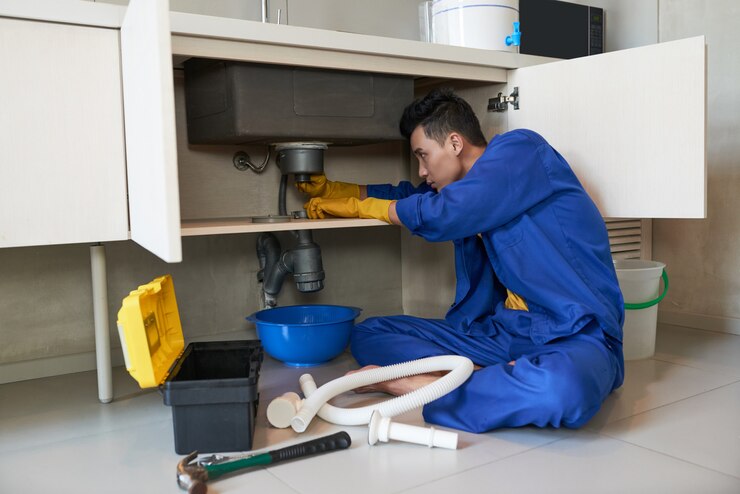
Leaky faucets and clogged drains can lead to water waste and potential damage. Regularly check faucets, showerheads, and pipes for leaks. Address drips promptly by replacing worn-out washers or O-rings. To maintain showerhead performance, remove mineral buildup by soaking the showerhead in a vinegar solution overnight, then scrubbing away any remaining deposits. For clogged drains, use a drain snake or a mixture of baking soda and vinegar followed by hot water to clear minor blockages. Avoid using harsh chemical drain cleaners, as they can damage pipes over time.
5. Tile Deep Cleaning
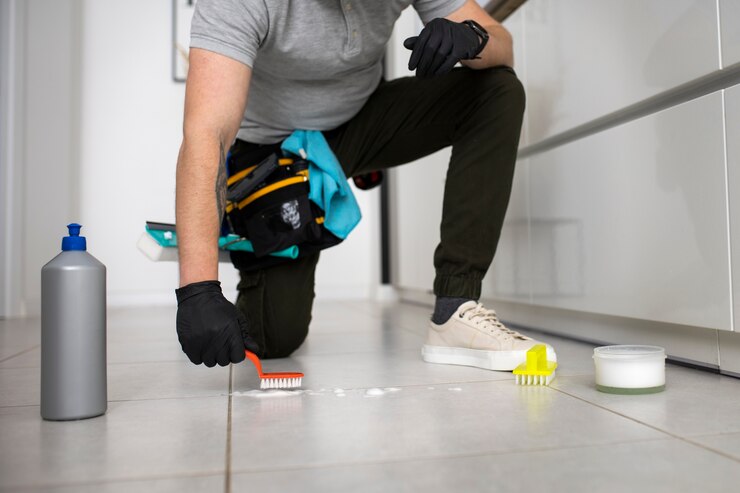
Tiles can accumulate grime and soap scum, leading to dull surfaces and potential mold growth. For a thorough clean:
- Create a paste using baking soda and water.
- Apply the paste to the tiles and grout lines.
- Scrub with a brush, focusing on stained or discolored areas.
- Rinse thoroughly with clean water.
Regular deep cleaning not only enhances the appearance of your tiles but also prolongs their lifespan by preventing deterioration.
6. Odor Control
Maintaining a fresh-smelling bathroom enhances the overall experience. To naturally eliminate odors:
- Place a bowl of baking soda in a discreet corner to absorb unpleasant smells.
- Use a diffuser with essential oils like lavender or eucalyptus for a pleasant aroma.
- Ensure proper ventilation to prevent musty odors caused by trapped moisture.
Regular cleaning of drains and trash bins also helps in maintaining a fresh environment.
7. Water Damage Inspection
Early detection of water damage can prevent extensive and costly repairs. Regularly inspect your bathroom for signs such as:
- Peeling paint or wallpaper.
- Warped or soft spots on walls or floors.
- Persistent musty odors.
If you notice any of these signs, investigate promptly to identify the source of moisture and address it to prevent further damage.
8. Upgrade to Water-Efficient Fixtures
Modern water-efficient fixtures not only conserve water but also reduce utility bills. Consider installing:
- Low-Flow Showerheads: These use less water without compromising pressure.
- Dual-Flush Toilets: Offer separate flush options for liquid and solid waste, optimizing water usage.
- Aerated Faucets: Mix air with water to maintain pressure while using less water.
The Environmental Protection Agency’s Water Sense program labels products that meet water efficiency and performance criteria, making it easier to choose efficient fixtures.
9. Organization and Decluttering
A well-organized bathroom is easier to clean and more functional. Implement storage solutions to keep countertops clear:
- Over-the-Toilet Shelves: Utilize vertical space for storing toiletries and towels.
- Drawer Dividers: Keep small items organized and easily accessible.
- Shower Caddies: Organize bath products to prevent clutter in the shower area.
Regularly assess your bathroom items and remove products that are expired or no longer in use to maintain a tidy space.
10. Schedule Professional Inspections
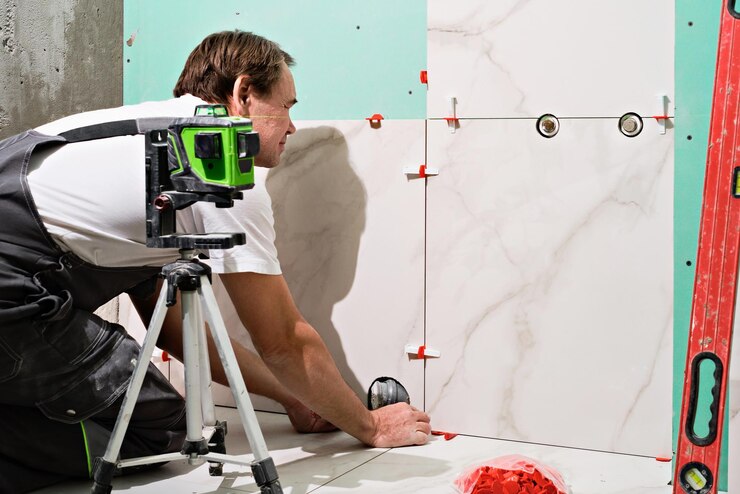
While regular maintenance can prevent many issues, it’s advisable to have a professional inspection annually.
A professional contractor can assess potential plumbing issues, inspect for hidden leaks, and ensure all fixtures are functioning efficiently. Some key benefits of professional inspections include:
- Early Leak Detection: Professionals use advanced tools such as thermal imaging and moisture meters to identify leaks before they cause structural damage.
- Fixture Longevity: Regular inspections help extend the lifespan of sinks, toilets, and showers by ensuring they are in optimal condition.
- Compliance with Building Codes: Professionals can ensure your bathroom meets local plumbing and safety regulations, preventing costly code violations.
Conclusion
Regular bathroom maintenance is a proactive approach that saves money, preserves the integrity of your home, and enhances daily comfort. By following these essential tips—cleaning regularly, preventing mold, maintaining fixtures, and scheduling professional checkups—you can keep your bathroom fresh, hygienic, and in top condition.
Need Expert Help?
If you’re dealing with persistent plumbing issues, mold concerns, or bathroom fixture upgrades, our team of experienced professionals is here to help. Contact us today for expert bathroom maintenance and remodeling solutions!

